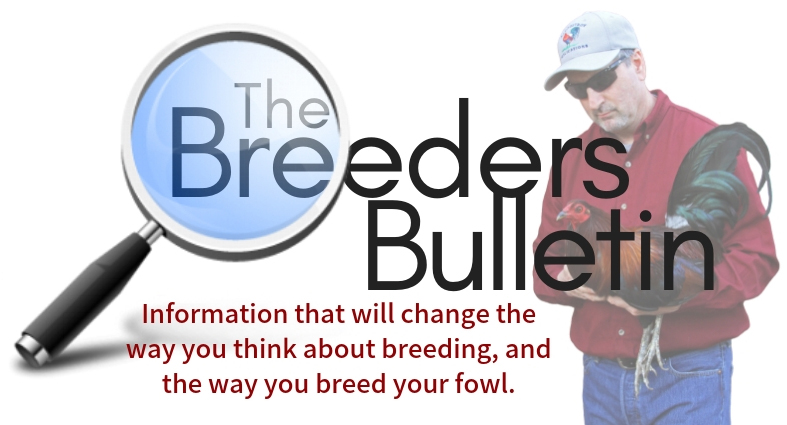By Kenny Troiano
Copyright © 2019 by Kenny Troiano/Maximus Troy Publications
I find the subject of selection to be the most interesting part of breeding. Selection is a process that deals with maintaining the characteristics and traits of the breed, as listed in the Standard of Perfection, and at the same time, the personal preference of the breeder.
Although the strain must adhere to certain requirements concerning conformation of body and a variety of plumage colors, there are some subtle but significant modifications a breeder can select for to improve his strain and make them unique and distinctive.
Whether or not a breeder will be successful depends on his knowledge and skill as a breeder and the popularity of his strain. Breeding a successful strain is like beauty itself, “it’s in the eyes of the beholder.” A bird could look like a “disaster” to one person and a “masterpiece” to the other. The truth is, it’s all up to you. They are your birds. You’re the one that has to look at them day after day, 365 days of the year. My advice to you would be to breed them the way you want them to look, act and perform, not the way everyone else tells you to breed them.
However, no matter what type of fowl you may have, or how good they may be, they will always be criticized in one way or another. Just laugh that stuff off. Never mind the critics. I know, because I live with criticism every day. When you put yourself in the spotlight as I do, there’s always going to be someone out there that’s going to be crossed with you, it goes with the territory.
Devote your time, energy and money to breeding fowl that are strong, healthy, and uniform. And most importantly, make sure they are good representatives of their breed and variety. The best bred birds are worthless without having these most essential qualities.
SELECTION IS AN IMPORTANT TOOL IN THE BREEDING OF HIGH QUALITY FOWL: Thanks to “The Powers of Selection” farming and livestock production has never been better. Today, with the use of modern technologies and careful selection of breeding stock, chicken farmers are able to produce hens that lay three hundred plus eggs a year, and meat chickens that have a high feed-to-weight conversion ratio, which enables them to be butchered and sent to market at only six weeks of age. This is all accomplished through “The Powers of Selection.”
Whether it be with chickens, or any other animal, the right selection of characteristics and traits can improve just about any family or strain. With the use of intelligent selection, not only can they be improved, but also, they can be molded into just about any shape or form the breeder wishes, and in a very short amount of time.
Look at the domestic dog, they originated from the wolf. With the use of selective breeding practices, by breeders with specific goals in mind, they were able to produce all the different varieties of dogs that we have today. Each of them bred for a specific function and purpose. Well, the same has happened to the chicken, which first derived from the Wild Jungle Fowl of South East Asia, and consists of four species of wild fowl, such as:
- The Red Jungle Fowl (Gallus gallus)
- The Grey Jungle Fowl (Gallus Sonneratti)
- The Ceylon Jungle Fowl (Gallus Stanleyii)
- And the Forked Tail or Javanese Jungle Fowl (Gallus Furcatus)
From the breeding of these four separate, but distinct types of Wild Jungle Fowl, over a period of more than four-thousand years, selecting for various functions and traits, has given us all the varieties of chickens we see today. These include:
- Commercial egg producers
- Commercial meat producers
- Dual Purpose chickens, specially bred for the backyard breeder
- Ornamental or show type chickens of all kinds
- And yes, even chickens for sport, such as the American and Old English Gamefowl
A matter of fact, gamefowl were the first chickens to be domesticated because of their desire and tenacious nature to fight to the death. Although cockfighting became one of the worlds’ first spectators sport, it didn’t take long for people to realize the value of the chicken for their eggs and meat.
The practice of selective breeding was once described to me like this: “chickens are like clay. Any breeder who is attentive, patient and skillful enough can sculpt and mold his birds into practically anything he wants them to be. Selection is a powerful tool that in the wrong hands can be disastrous, but when practiced by a skillful breeder with specific goals in mind, it can be quite magical, when everything is done right, its shear bliss.”


